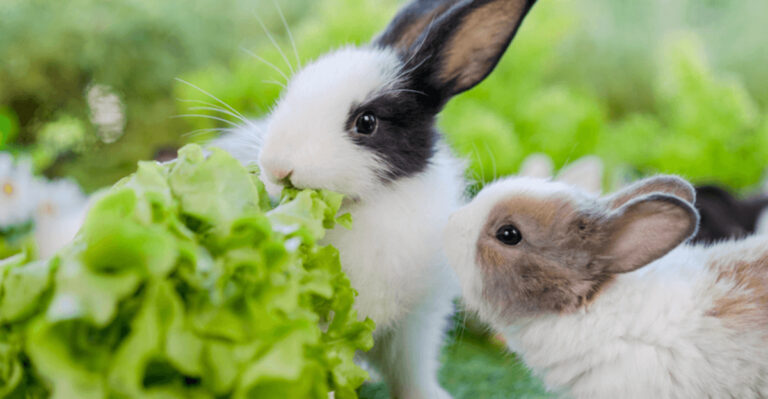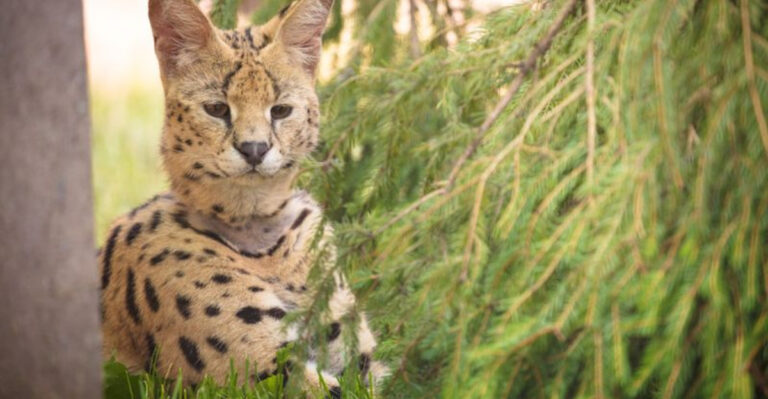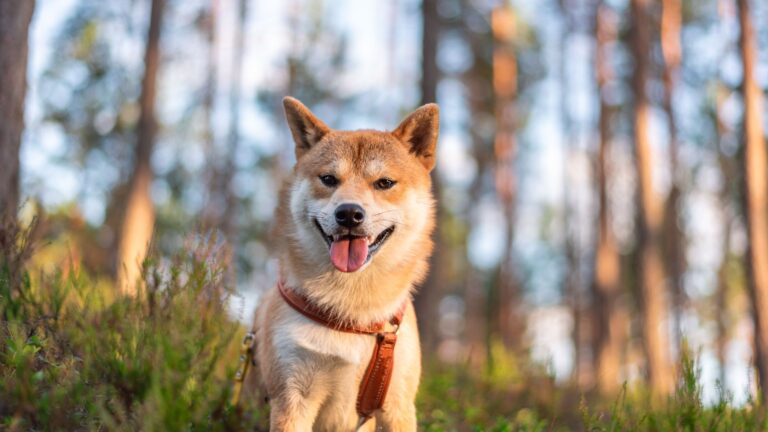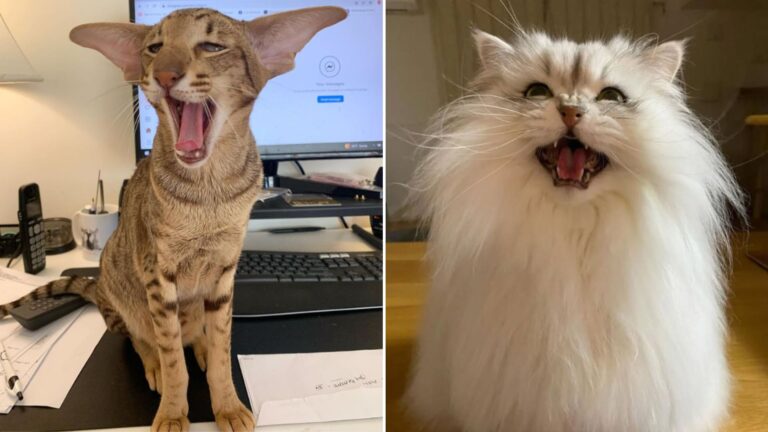14 Fascinating Ways Cats Adapt To Seasonal Changes
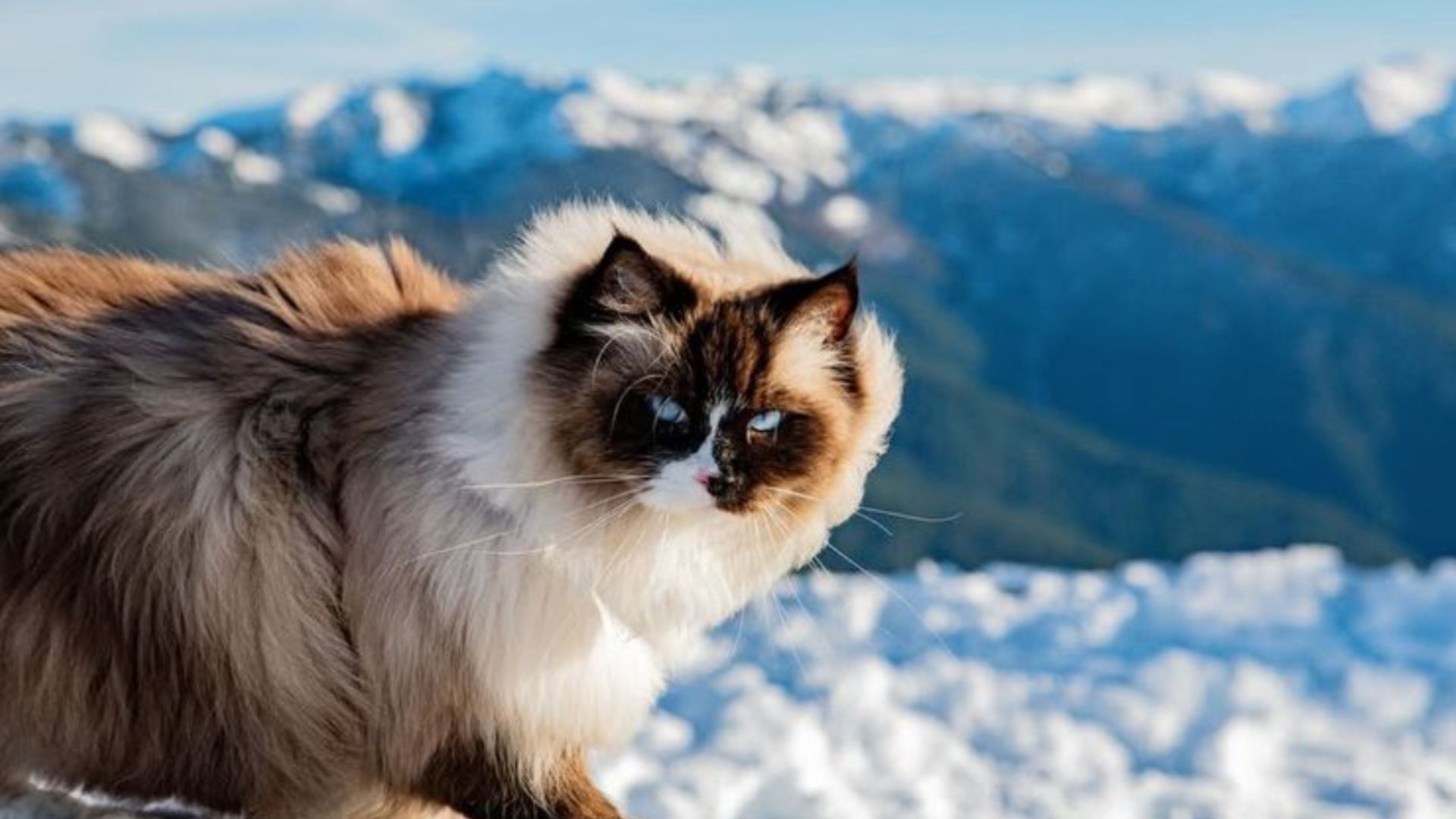
Cats, with their independent spirit and curious nature, are magnificent creatures. They possess an intriguing ability to adapt to the ever-changing seasons.
From the coziest of winters to the sunniest of summers, our feline friends have developed some fascinating strategies to stay comfortable and content.
Let’s embark on a journey to discover these extraordinary ways cats adjust to the shifting seasons.
1. Winter Coat Growth
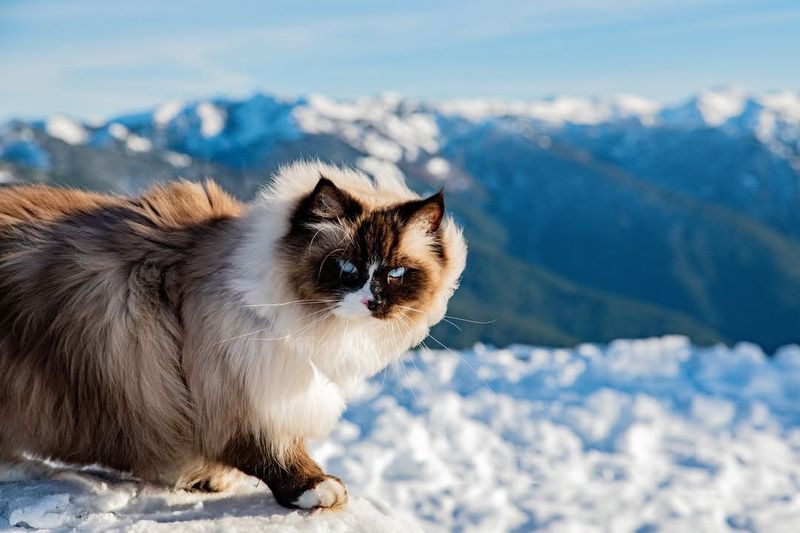
As the cold winds of winter approach, cats begin to grow a plush, dense coat to keep the chill at bay. This natural adaptation is akin to pulling on a warm, fuzzy sweater. It’s nature’s way of ensuring they stay toasty, even when the temperature drops. The process begins in the fall, as the days grow shorter, and their bodies prepare for the cold months ahead.
This extra layer of fur acts as insulation, trapping heat close to the body. Cats with longer hair might resemble tiny lions with their mane-like appearance. While their fluffy coats are a visual delight for us, they’re an essential survival mechanism for them.
Interestingly, indoor cats can also exhibit winter coat growth, albeit to a lesser extent. Their reliance on a home’s temperature control means they don’t need as thick a coat. Nonetheless, their bodies still prepare for potential cold snaps. It’s a reminder that even the coziest indoor cat retains its wild instincts. So, the next time you see your feline looking extra fluffy, they’re just gearing up for the season’s chill.
2. Sun-Seeking Behavior
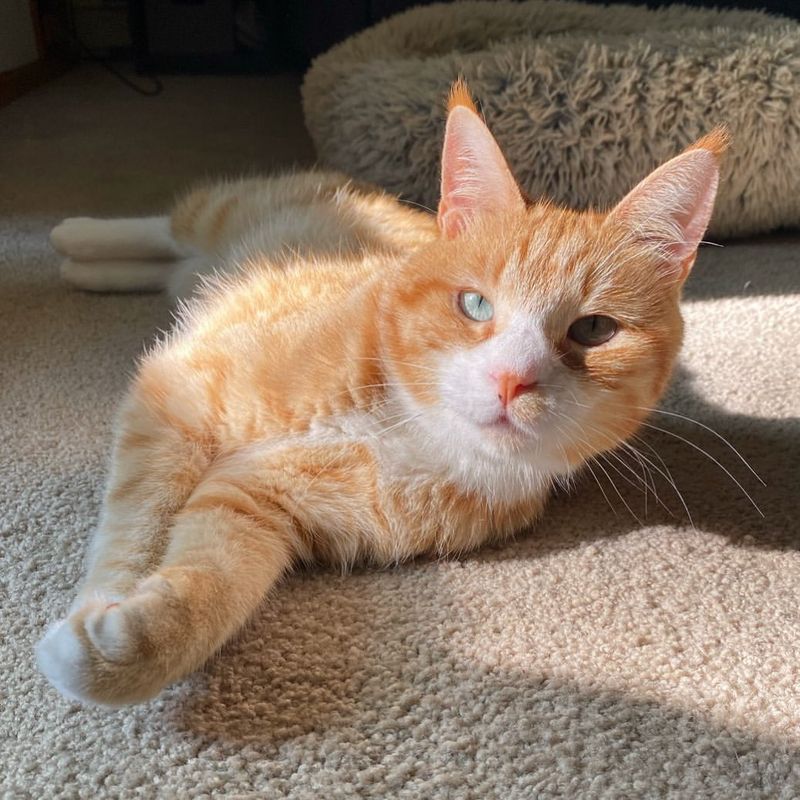
As the sun peeks through the clouds and offers a gentle warmth, cats become expert sun-seekers. They’re the connoisseurs of comfort, always in pursuit of the perfect patch of sunlight. This delightful behavior is more than just laziness; it’s a clever adaptation to seasonal changes.
The sun’s rays offer a natural heating pad for cats, helping to maintain their body temperature. During cooler months, they might be found sprawled in sunbeams, soaking up every ounce of warmth. This sunbathing also provides them with a boost of Vitamin D, crucial for their overall health.
Sun-seeking is also a wonderful way for cats to conserve energy. By lying in warm spots, they require less effort to stay warm, allowing them to spend their energy on more important activities, like plotting world domination – or simply catching more z’s. Indeed, watching a cat chase the sun’s path across a room is a spectacle of nature’s design in action.
3. Increased Appetite In Fall

Cats often develop a hearty appetite as autumn leaves tumble and temperatures dip. This increase in hunger is nature’s cue for them to start building up reserves for the colder months ahead. It’s a fascinating survival instinct that ensures they stay well-nourished and ready to face winter’s challenges.
The cooler weather encourages cats to stockpile calories. This isn’t unlike how humans might indulge in comfort foods as the holidays approach. A feline’s metabolism ramps up to generate the extra energy needed to maintain body heat in dropping temperatures.
Owners might notice their cats consuming more food during this time, a behavior that may seem puzzling at first. Yet, it’s an important part of their seasonal adaptation. While it may be tempting to spoil them with extra treats, maintaining a balanced diet is crucial. Ensuring your cat has access to quality nutrition will support them through the seasonal shift, keeping them healthy and happy.
4. Shedding Excess Fur In Spring

This natural process is akin to shedding a winter jacket, allowing them to remain comfortable as the weather warms. For cat owners, it’s a time to keep the lint roller handy!
The shedding process helps cats regulate their body temperature, ensuring their coat is suitable for the upcoming summer heat. By shedding excess fur, they prevent overheating and maintain their sleek, agile form. It’s a fine-tuned balance between staying warm and staying cool.
This seasonal change isn’t just about comfort; it’s a fascinating peek into a cat’s biology. Cats, whether indoor or outdoor, instinctively shed their thicker winter coats. Owners can assist them through regular brushing to remove loose fur and minimize hairballs. So, when spring arrives, embrace the flurry of fur—it’s just your feline friend preparing for sunny days ahead.
5. Hunting Instincts Heighten
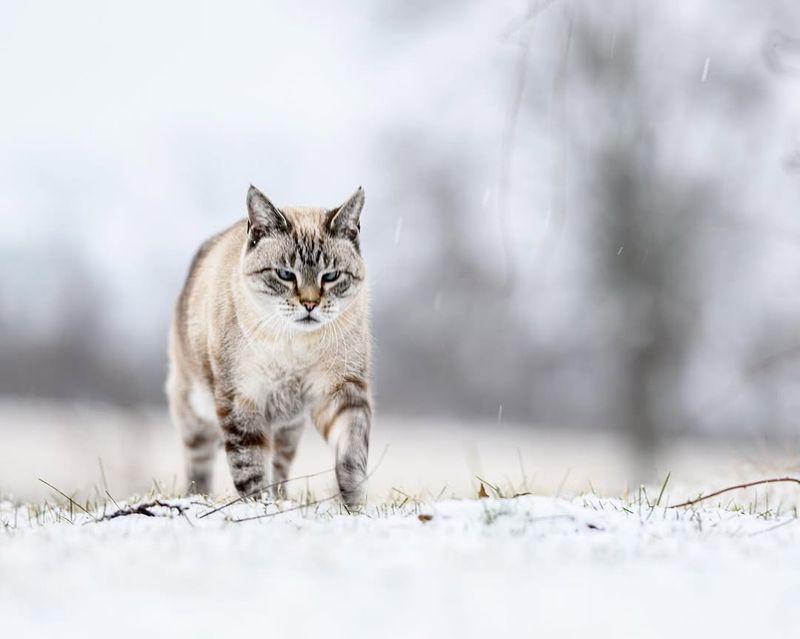
Autumn, with its rustling leaves and cooler breezes, seems to ignite their predatory senses. Cats become more active, driven by an innate urge to hunt and gather.
This behavior isn’t merely about securing a meal; it’s an age-old instinct that ensures they’re prepared for leaner times. The fall is a crucial period when small prey animals are abundant, allowing cats to practice their hunting skills.
For indoor cats, this might manifest as a burst of energy, chasing after toys with renewed vigor. It’s a delightful display of agility and focus, and an opportunity for owners to engage in interactive play. Encouraging these instincts can be a rewarding experience, providing mental stimulation and physical exercise. So, whether they’re prowling the backyard or pouncing on a feather toy, it’s a season of action-packed adventures.
6. Seeking Warmth In Winter
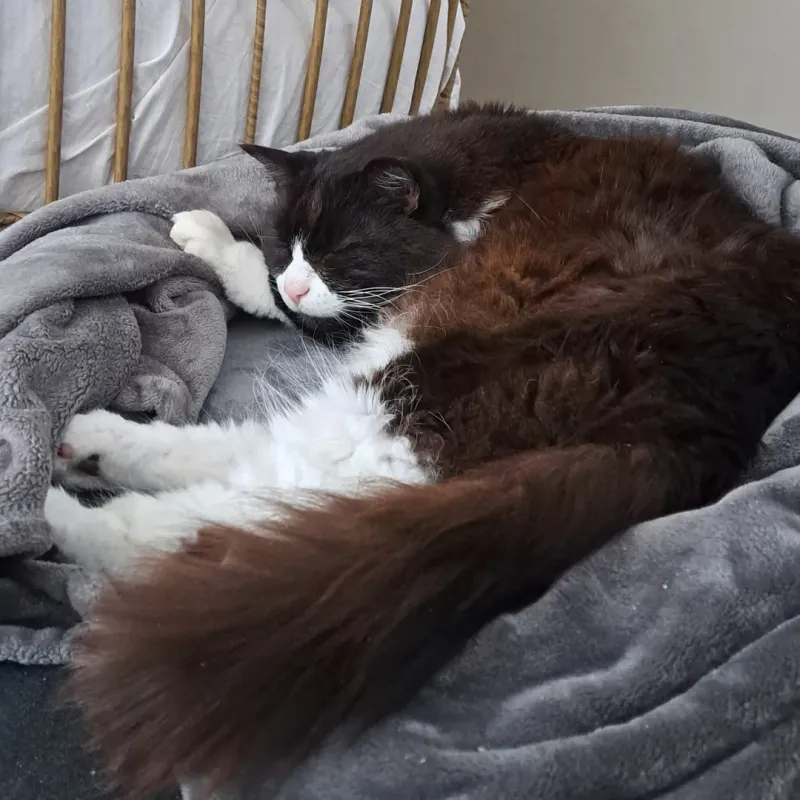
When winter arrives, cats become masters of finding warmth. From curling up by a crackling fire to nestling into a cozy blanket, they know how to stay snug. It’s a charming adaptation, one that highlights their love for comfort and warmth.
This behavior is more than just a preference – it’s an essential survival tactic. Finding warm spots helps cats maintain their body temperature without expending too much energy. It’s an efficient way to conserve resources during colder months.
Even in a heated home, cats will gravitate towards the warmest areas. Their behavior might include burrowing into piles of laundry or perching near heating vents. As they snuggle into these toasty nooks, they’re not just seeking comfort but also preserving their energy. It’s a cozy demonstration of their resourcefulness in adapting to winter’s chill.
7. Adapting Sleep Patterns
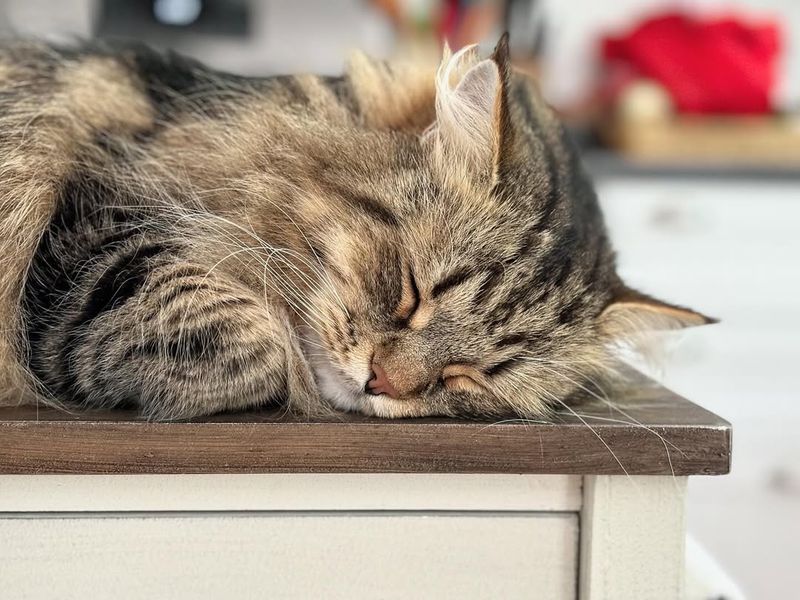
Cats are champion sleepers, and their sleep patterns often adapt with the seasons. As the days grow shorter in fall and winter, cats may sleep more, conserving energy to stay warm. Conversely, spring’s longer days might see them more active, enjoying the extended daylight.
This seasonal adjustment is a nod to their wild ancestors, who needed to be alert to changing environments. In cooler months, conserving energy by sleeping allows them to maintain their body temperature efficiently.
Owners should be aware of these changes, ensuring their feline friends have a comfortable sleeping area. Encouraging a regular sleep routine with cozy beds or favorite blankets can help. Understanding these shifts in behavior offers insight into how cats manage their needs throughout the year. So, if your cat seems like a napping pro, they’re just attuning to the seasonal rhythm.
8. Agile Cold Weather Movements
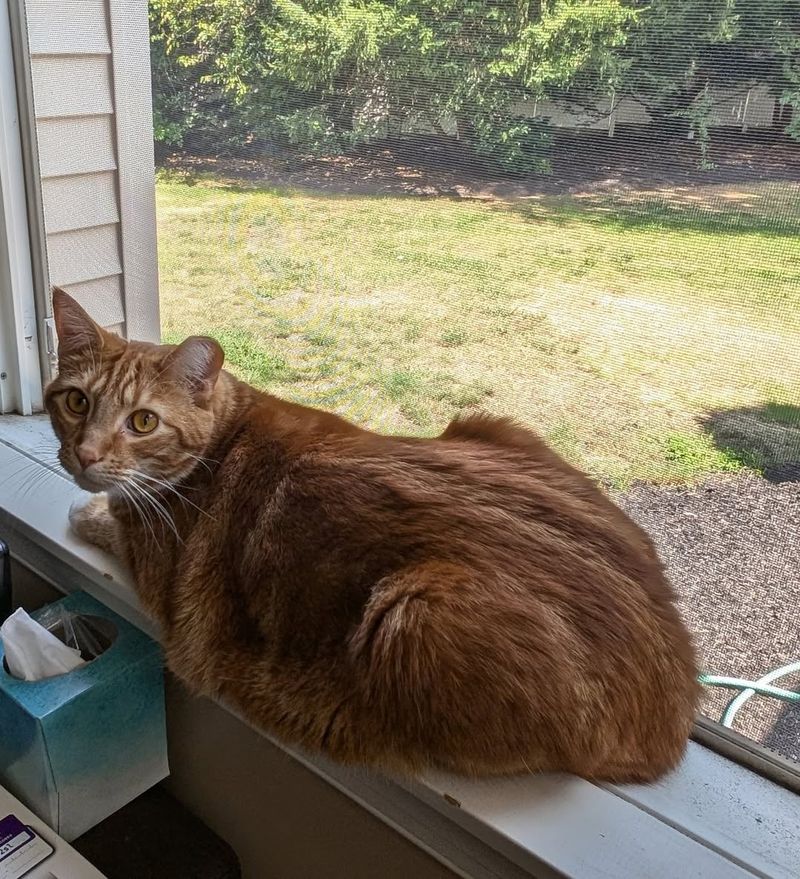
Winter may slow some creatures down, but not our feline friends. Cats remain agile and adept, even when the ground is frosty. Their graceful movements are a testament to their adaptability, maneuvering through snow with practiced ease.
Cats’ physical prowess isn’t hindered by cold weather; rather, they adjust their movements to navigate slippery surfaces. Their innate balance and keen instincts guide them as they leap between snowdrifts or dash across icy patches.
Their winter agility is also a survival trait, allowing them to escape predators or hunt efficiently. Even indoor cats exhibit this dexterity, chasing toys with the same enthusiasm. Owners can provide safe, engaging play areas to encourage these movements, keeping their cats physically fit and mentally sharp. As they bound through the season, their poise in winter conditions is a remarkable display of feline grace.
9. Hydration Awareness
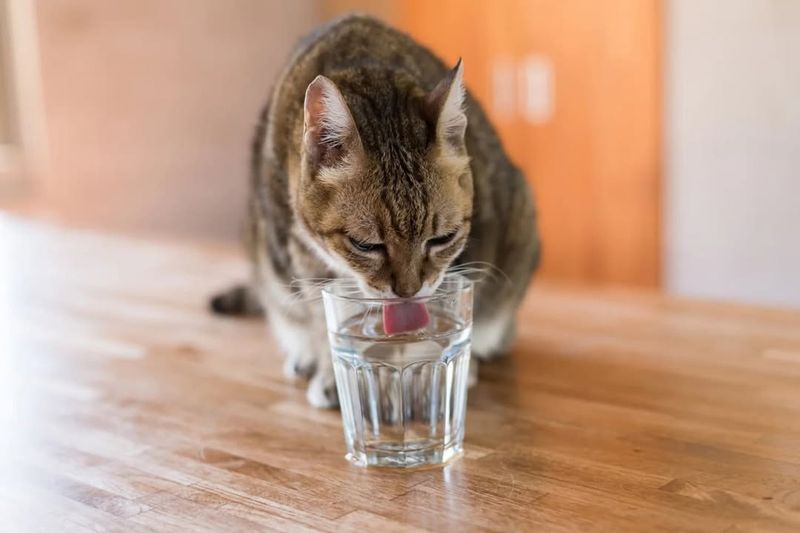
With the arrival of summer, hydration becomes key for cats. As temperatures rise, they exhibit an increased awareness of their water intake – an essential adaptation to prevent dehydration.
Cats may seek out cool, refreshing water sources, such as a trickling fountain or a shaded bowl. Despite their desert ancestry, modern cats understand the importance of staying hydrated in the heat.
This behavior is vital for their health, as proper hydration supports kidney function and keeps them active. Owners should ensure their cats have access to clean, fresh water at all times, especially during warmer months. Investing in a cat fountain can encourage more frequent drinking. By catering to their hydration needs, we help our feline friends thrive, no matter the season. So, when your cat slurps up water with gusto, they’re simply embracing their summer survival instincts.
10. Summer Cooling Techniques
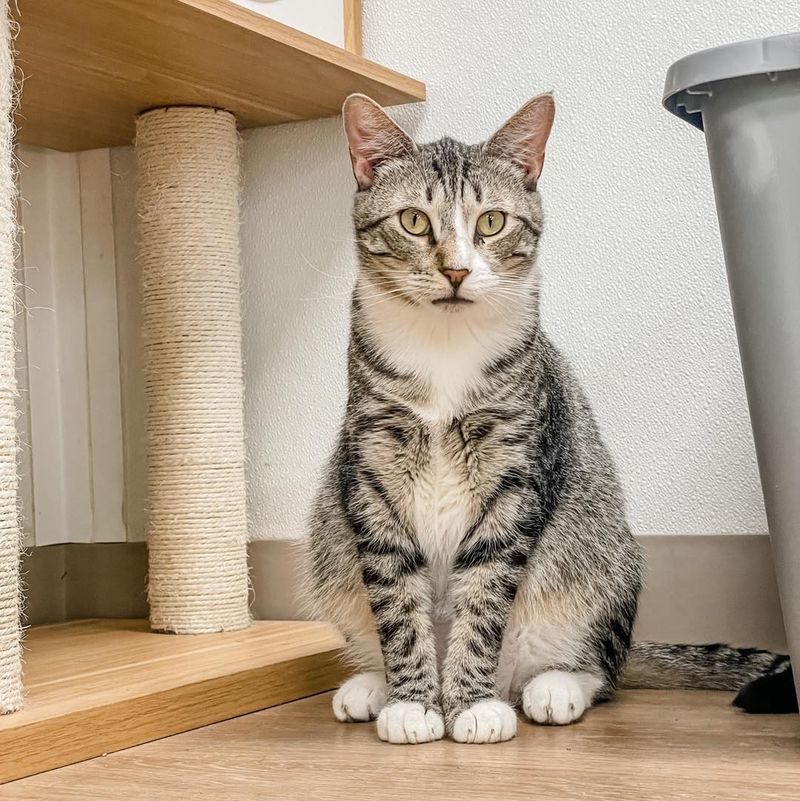
When summer’s heat becomes oppressive, cats employ a variety of cooling techniques to stay comfortable. From seeking shaded spots to enjoying a cool breeze from a fan, they know how to beat the heat with style.
Cats may stretch out on cool surfaces like tiles or bathtubs, maximizing skin contact to lower their body temperature. Their preference for shaded areas helps them avoid direct sunlight, preventing overheating.
Additionally, grooming plays a significant role in their cooling strategy. By licking their fur, they create a natural evaporation process that aids in temperature regulation. Owners can assist by providing a fan or air conditioning to create a pleasant environment. During summer, it’s all about finding the chill zone, and cats do it with grace and ease. Their cool demeanor is a lesson in adapting to the hottest days.
11. Enhanced Night Vision
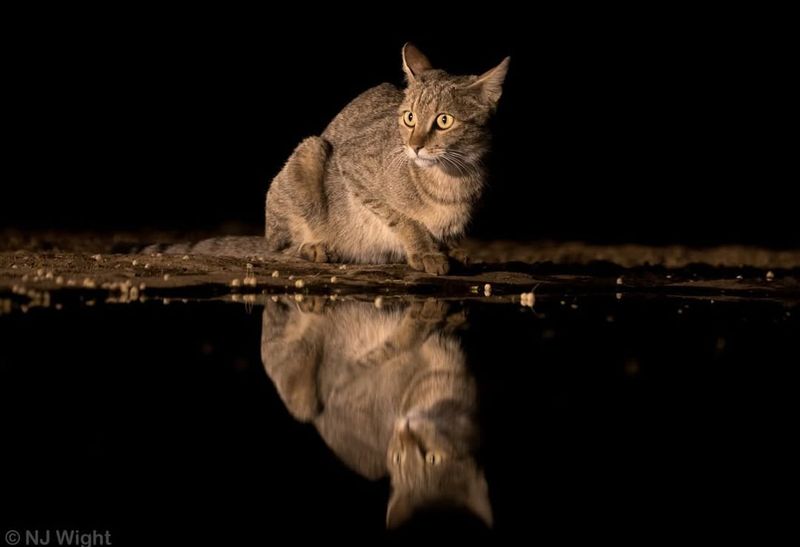
Cats are renowned for their exceptional night vision, and this trait becomes even more pronounced during the cooler, darker months. As daylight hours shrink, their ability to navigate the night becomes a critical adaptation.
Their eyes, equipped with a reflective layer called the tapetum lucidum, amplify low-light conditions, giving them an edge in twilight or nighttime adventures. This adaptation not only aids in hunting but also ensures they remain aware of their surroundings.
For indoor cats, this might mean more nighttime activity, as they explore the house in the dark. Owners can provide toys that encourage safe nocturnal play. This enhanced vision is a testament to their evolutionary history, allowing them to thrive in varied light conditions. Indeed, watching a cat stealthily move under the moonlit sky is both a mystical and practical display of their nighttime prowess.
12. Seasonal Grooming Routines
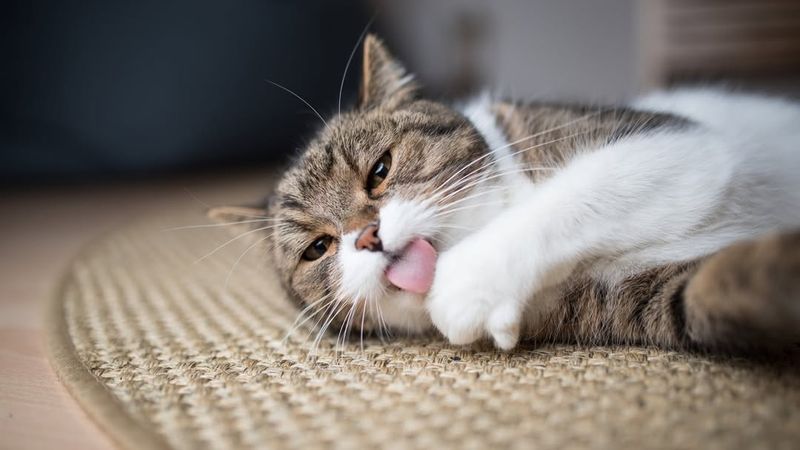
With each season comes a new grooming routine for cats, reflecting their adaptability to changing weather. As temperatures rise or fall, cats adjust their grooming habits to maintain their coat’s condition.
During spring and summer, they might groom more frequently to shed excess fur, keeping cool and preventing matting. In colder months, grooming helps distribute natural oils, providing insulation and maintaining a healthy coat.
Owners can support these seasonal routines by regularly brushing their cats, which helps manage shedding and supports skin health. Providing scratching posts and grooming tools caters to their instinctual needs.
These routines are not just about cleanliness but also play a crucial role in regulating temperature and overall well-being. So, when your cat dedicates time to grooming, they’re engaged in a meticulous process of self-care, perfectly in tune with the seasons.
13. Adjusting Social Behaviors
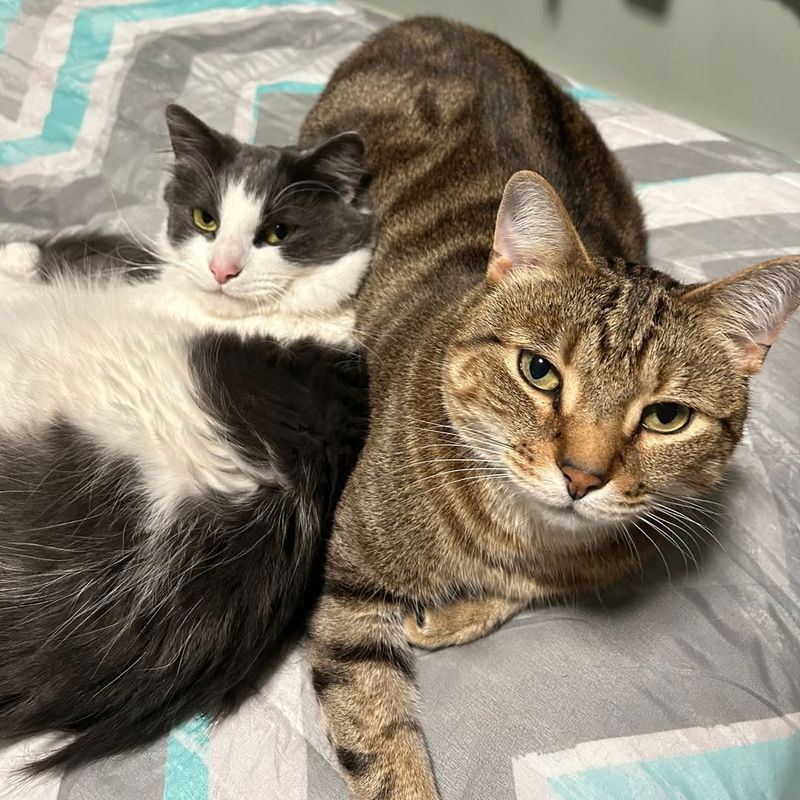
Cats’ social behaviors often shift with the seasons, reflecting their adaptability and resourcefulness. As the environment changes, so too does their need for interaction—both with humans and fellow felines.
During colder months, cats might seek more warmth and comfort, leading to increased cuddling and social interactions. As spring and summer bring longer days, they may exhibit more independence, exploring their surroundings with curiosity.
Understanding these shifts can enhance the bond between cats and their owners. Providing opportunities for interaction, such as interactive toys or play sessions, caters to their social needs. Observing their social cues allows owners to respond appropriately, fostering a harmonious relationship. These seasonal social shifts are a reminder of the dynamic and multifaceted nature of our feline companions. Indeed, they adapt their social strategies to suit both the weather and their whims.
14. Territorial Adjustments

Cats are territorial creatures, and seasonal changes can lead to adjustments in their territorial behaviors. As the landscape transforms with the seasons, so too does their approach to personal space.
In spring and summer, with the influx of new scents and sights, cats may become more vigilant in marking their territory. This behavior ensures that their domain is well-established and recognized by other animals.
Conversely, the quieter winter months might see a reduction in territorial displays, as cats conserve energy and focus on staying warm. Understanding these behaviors can help owners manage any potential conflicts, providing a stable environment for their cats. It’s a fascinating aspect of their adaptability, as they navigate the complexities of social structures and personal space.

